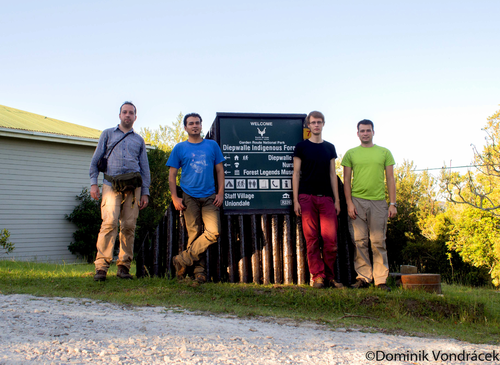
Our journey began in the Nature Reserve of Diepwalle, which is composed by one of the largest reservoirs of the highly decimate southern afrotemperate forest, as well as by colorful montane fynbos vegetation. We sifted as much forest litter as we could and regularly checked dung from various mammal species, even under unfavorable weather conditions.
The next stop, The De Hoop Nature Reserve, gave us the chance to explore a different scenario: coastal fynbos, savanna-like vegetation and plenty of aquatic and semiaquatic environments. In the search for copro-necrophilous beetles, we, naturally, did not missed the opportunity to scan the savanna for zebra dung to put our fingers in and antelope corpses to inspect, with a little bit more caution, of course.
Then we moved to the region of Swellendam for having access to the natural areas of Grootvaderbosch and Boosmanbos, where we looked at the leaf-litter of the afrotemperate forest for elusive hydrophilids. The wet rocks surrounding the abundant waterfalls of the zone offered a unique environment which we scrutinized in detail for small beetles. Not only the natural forested zones provided us with interesting specimens, but the farms of the zone provided us with kilogram after kilogram of fresh cow and horse dung, that we diligently sorted with fabulous results; among the hundreds of beetles swarming int the nutritious dung, we obtained many specimens of a new genus, member of the tribe Megasternini (Hydrophilidae: Sphaeridiinae). The elucidate evolution of this tribe is the main objective of my PhD project. For this reason such finding are of a vital importance for my studies.
Our journey (almost) finished in the Hermanus area. The beautiful sandy beaches of this enclave gave us the chance of diving into piles of rotten kelp in the quest for highly specialized Cercyon (Megasternini) species, to the surprise and puzzlement of the bathers. In the nearby rivers we succeed finding a few specimens of Cylorygmus a rare genus of Hydrophilidae, key to the understanding of the evolution of the Rygmodinae subfamily, which almost exclusively inhabit the southernmost spots of the globe: New Zealand, Australia, Chile and south Africa.
We said goodbye to this wonderful country with a night excursion to the most exotic locality on the expedition: the green areas of the suburbs of Cape Town. We returned to the Czech Republic with lots of interesting specimens that will enrich our researches, but also with tons of edifying experiences and a nice tanned skin.
More photos here!

